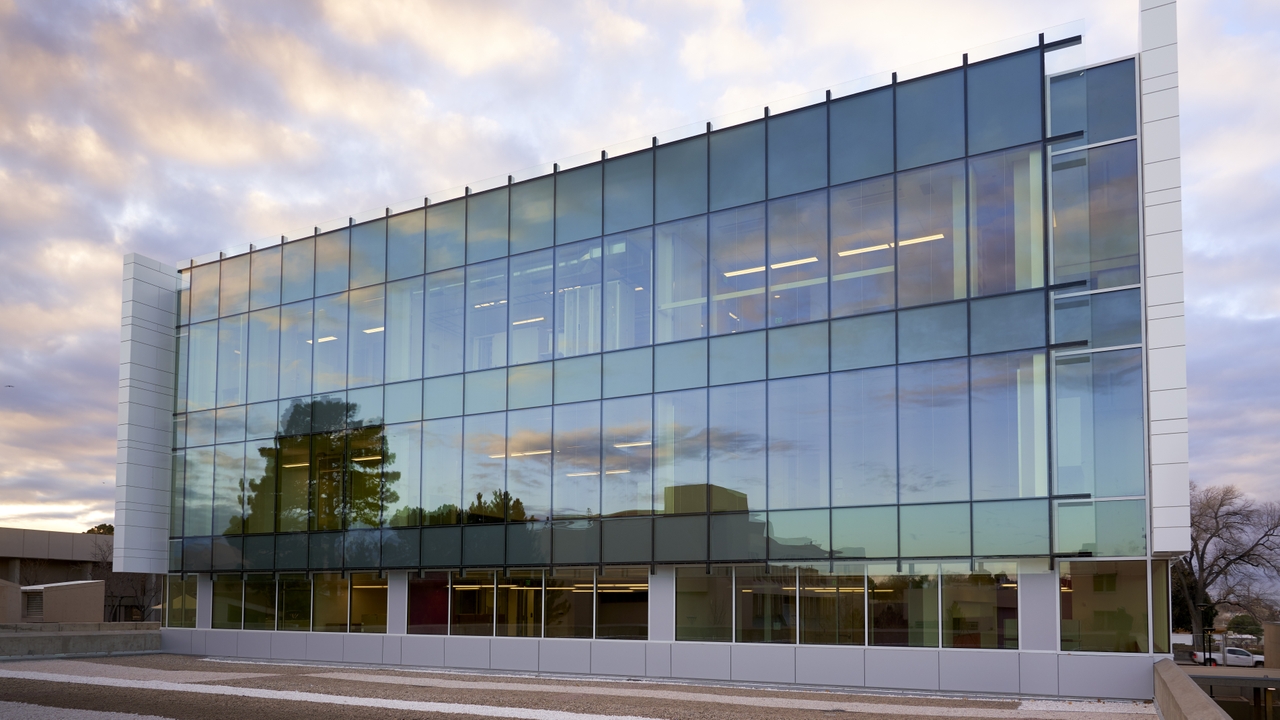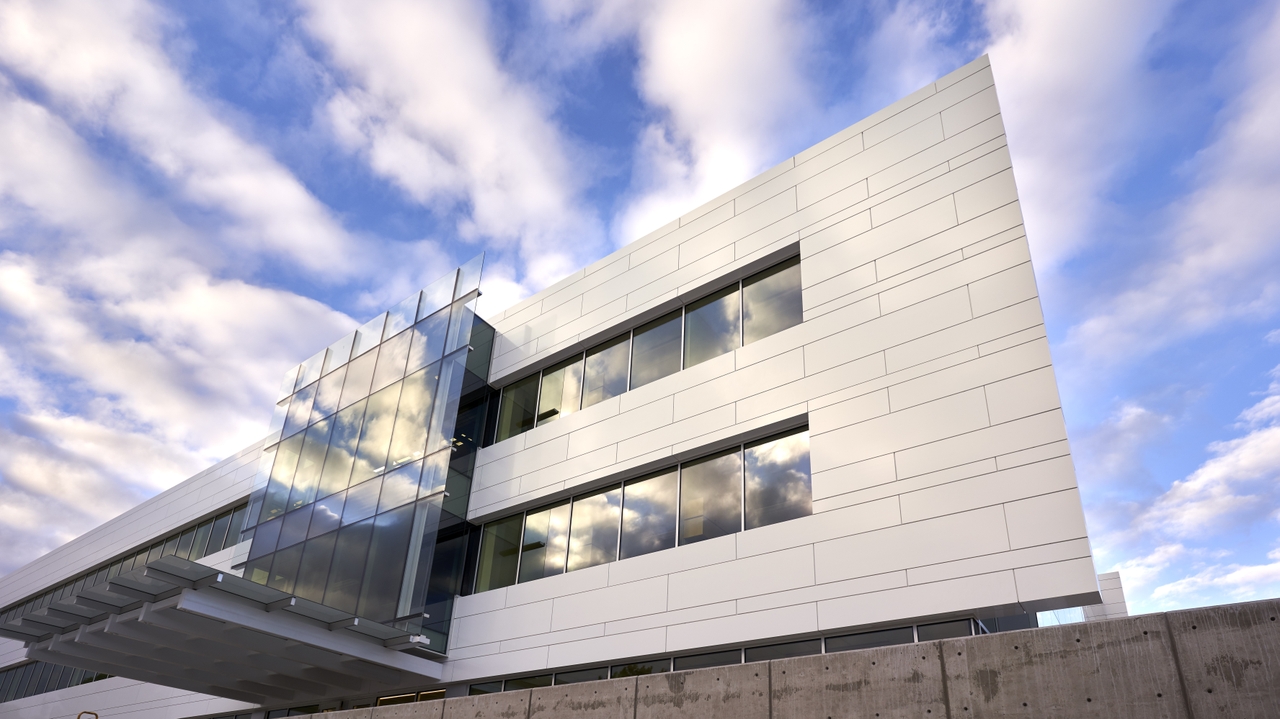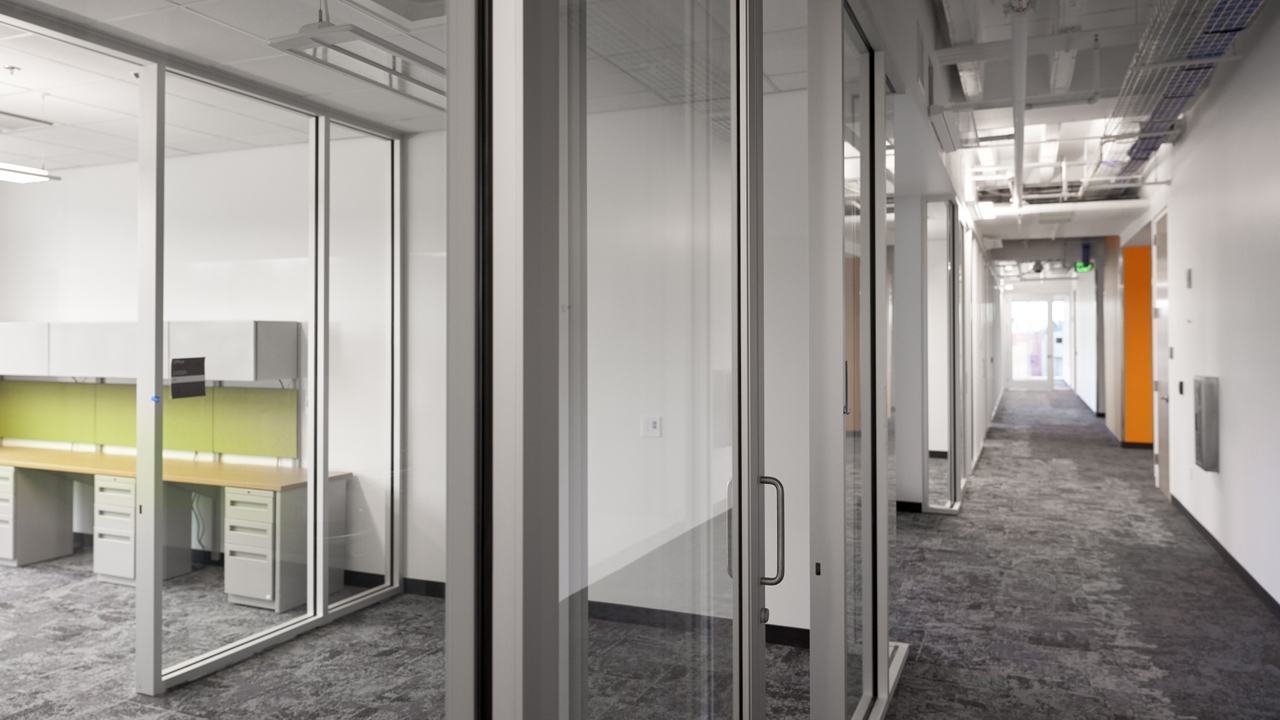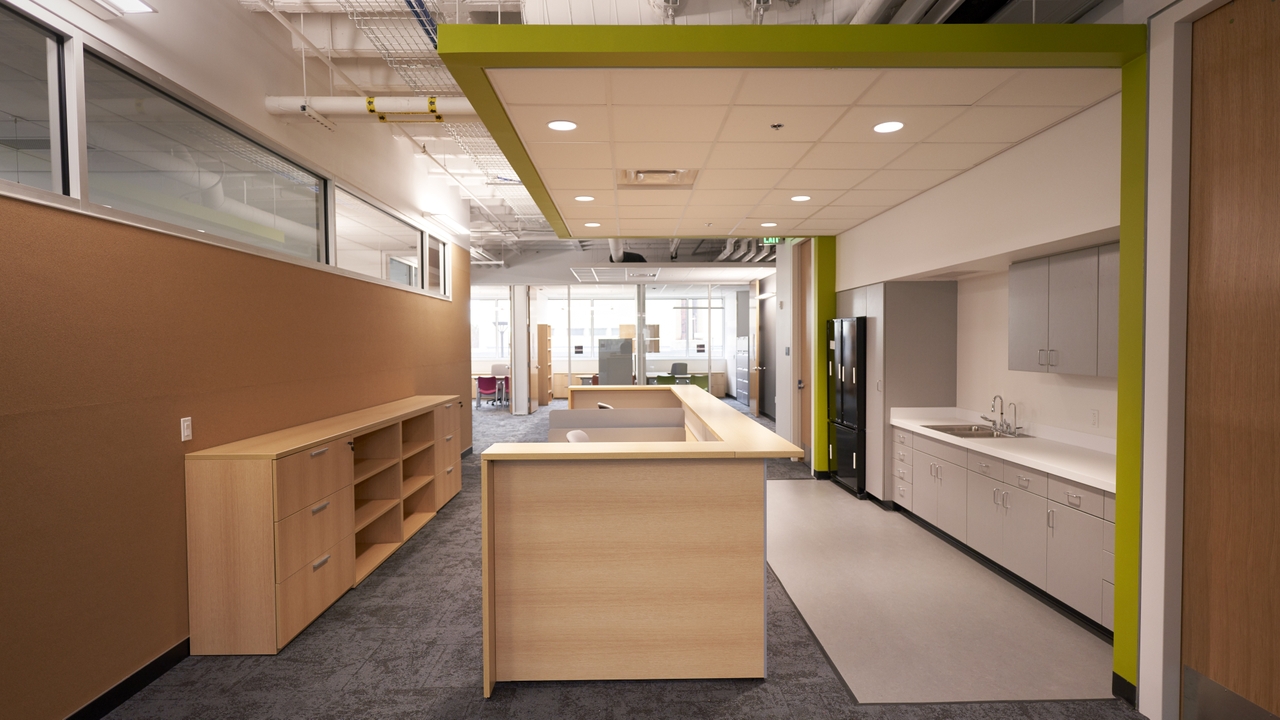The University of New Mexico will celebrate the completion of renovations at the Farris Engineering Center with a dedication ceremony at the building site on March 1.
"The Farris renovation truly positions us for greatness, and we are excited about the future potential of this building." - Christos Christodoulou, Jim and Ellen King Dean of Engineering and Computing
The ceremony will be held 3:30-5:30 p.m. at 1901 Redondo Drive, with university and local dignitaries, as well as alumni and friends, expected to be in attendance. Invitees are asked to RSVP here.
The building, constructed in 1967, underwent an 18-month, $26 million renovation and was completed in Dec. 2017. Faculty and staff moved into the new space at the beginning of the year.
Farris houses three departments in the School of Engineering: Chemical and Biological Engineering, Computer Science and Nuclear Engineering.
Christos Christodoulou, Jim and Ellen King Dean of Engineering and Computing, said the purpose of the event is to recognize all of the individuals who played a role in this renovation project.
“We want to express gratitude to the many individuals — from staff members to deans to architects to legislators to donors— who made this project possible,” he said. “It is a fantastic team of individuals who offered their vision, passion, talents, persistence and financial support to see this complex project come to fruition.”
Christodoulou especially recognized the efforts of April Davidson, academic operations officer for the School of Engineering, who organized many of the details of the renovation -- including the relocation of staff and faculty during the remodel and working with the planners and architects. He also recognized Maria Dion, group manager with UNM’s Planning Design and Construction, who was the central UNM point person for the remodel.
The Farris project has a long and interesting history, spanning several years and three deans of the School of Engineering.
It was then-Dean Gruia-Catalin Roman’s vision and advocacy that led to placing the Farris renovation project at the top among capital improvement priorities for the University and to securing the $20 million required to initiate the project. This effort was part of a broader vision of establishing a world-class engineering campus at UNM.
“The quality of the space is excellent,” he said. “Now we are on par with our peers, which will allow the School to grow.”
Roman left the dean’s position in 2014, and was succeeded by Dean Joseph Cecchi, who served until his retirement in July 2017. Cecchi took the reins of the project from there, securing the remaining funding. New Mexico Rep. Larry Larrañaga, a UNM Department of Civil Engineering alumnus, had championed funding for the Centennial Engineering Center and also played a major role in advocating for and obtaining the remaining funds from the legislature that were needed for the Farris project.
“When we renovated Farris, not only did we gain a beautiful new building, but we made the most efficient use of the funding, adding nearly 10,000 square feet to the building on the first and second floors,” Cecchi said. “And that project paved the way for building out the remaining laboratory space in the basement of Centennial Engineering Center, where several former Farris labs are now permanently located.”
The UNM Board of Regents approved the project in December 2015. The architect was RMKM Architecture, P.C., and the contractor was Bradbury Stamm.
The renovated Farris provides the School of Engineering with a major upgrade of a building that was showing its age. The most noticeable difference is the addition of natural light, provided by electrochromic-glazed windows that wrap the building and lighten and darken based on sunlight. This high-tech glazing is the first of its kind on the UNM campus, making for an energy- efficient and comfortable interior environment. The windows also provide stunning views of the city from every direction.
The redesigned building was built also with the modern student in mind. Glass-enclosed collaboration spaces are evident throughout the building to encourage student and faculty collaboration in an open and interdisciplinary environment. There are also three digital monitors in the building to display messages and information, and extra-large LCD display screens are installed throughout the building in collaborative spaces.
The three-story building contains no classrooms. It houses offices for faculty, staff and students, as well as computer labs, server rooms, conference rooms and event space for the three departments. In addition to the approximately 67,000 square feet of existing space, the renovation added 9,959 gross square feet to the first and second floors to align with the third floor. The building is silver-level LEED certified-eligible, featuring LED lighting throughout, as well as high-efficiency mechanical and electrical equipment that achieves more than a 50 percent reduction in energy use.
The building was also built with the future in mind. There is about 25,000 square feet of space in the basement to house future labs and offices, part of which is expected to be transformed into a student innovation space that will provide a dedicated space for various hands-on student projects.
“The Farris renovation truly positions us for greatness, and we are excited about the future potential of this building for not only increasing the quality of our current students’ educational experience but in attracting more students, excellent researchers, and industry collaborators,” Christodoulou said.



